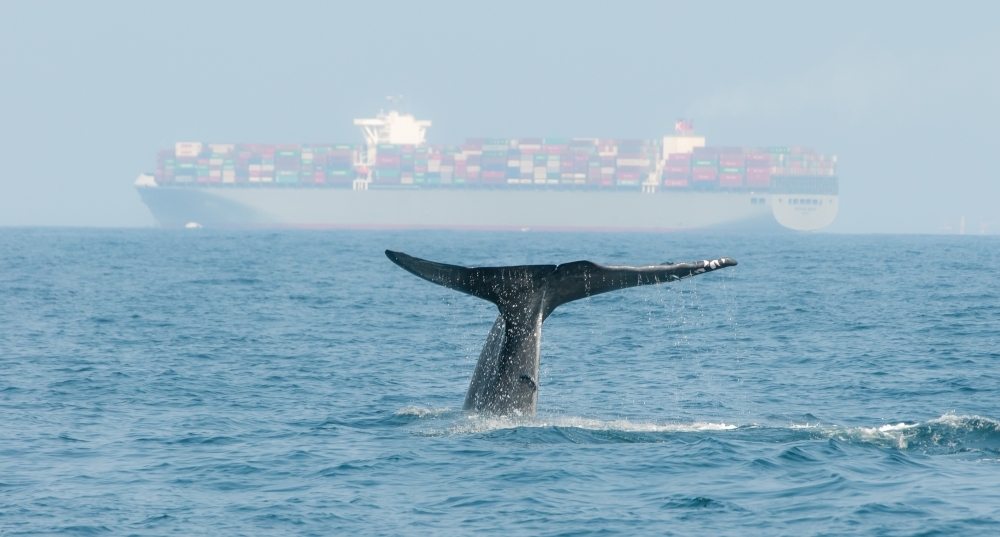
It’s well known that cargo vessels and whales don’t mix; whale-ship collisions are one of the leading causes of death for the majestic creatures. However, between high-profile accidents, careful observations by researchers in special areas and reporting by federal agencies such as the National Oceanic Atmospheric Administration, the global picture of whales versus ships has been somewhat unclear.
In a University of Washington-led paper published in the journal Science, UC Santa Barbara researchers add some clarity to that picture and it’s sobering: Global shipping traffic overlaps with about 92% of blue, fin, humpback and sperm whales’ migratory ranges.
“Most ship-strike studies are done at a regional scale, which is critically important to do, but does not give us the full picture of ship strikes worldwide,” said study co-author Rachel Rhodes, a project scientist at UCSB’s Benioff Ocean Science Laboratory (BOSL). “This analysis is the first global map of ship strike risk for these four large whale species, which is important because it helps us zoom out and look at the areas at highest risk at a global level. By taking this broader perspective, we can identify the highest-risk areas worldwide and strategically direct future research and conservation efforts where they’re needed most.”
Whales vs Ships
Whales and cargo ships have always been a lethal combination. Given their dimensions — often the size of skyscrapers and more than ten times the length of an adult blue whale — the vessels tower over the whales with which they share the ocean, and any whale unfortunate enough to be in the ships’ way usually doesn’t stand a chance. The overlap between shipping lanes and whale migratory paths increases the chances that ship strikes will continue if measures aren’t taken to protect these whales, according to UW assistant biology professor Briana Abrahms.
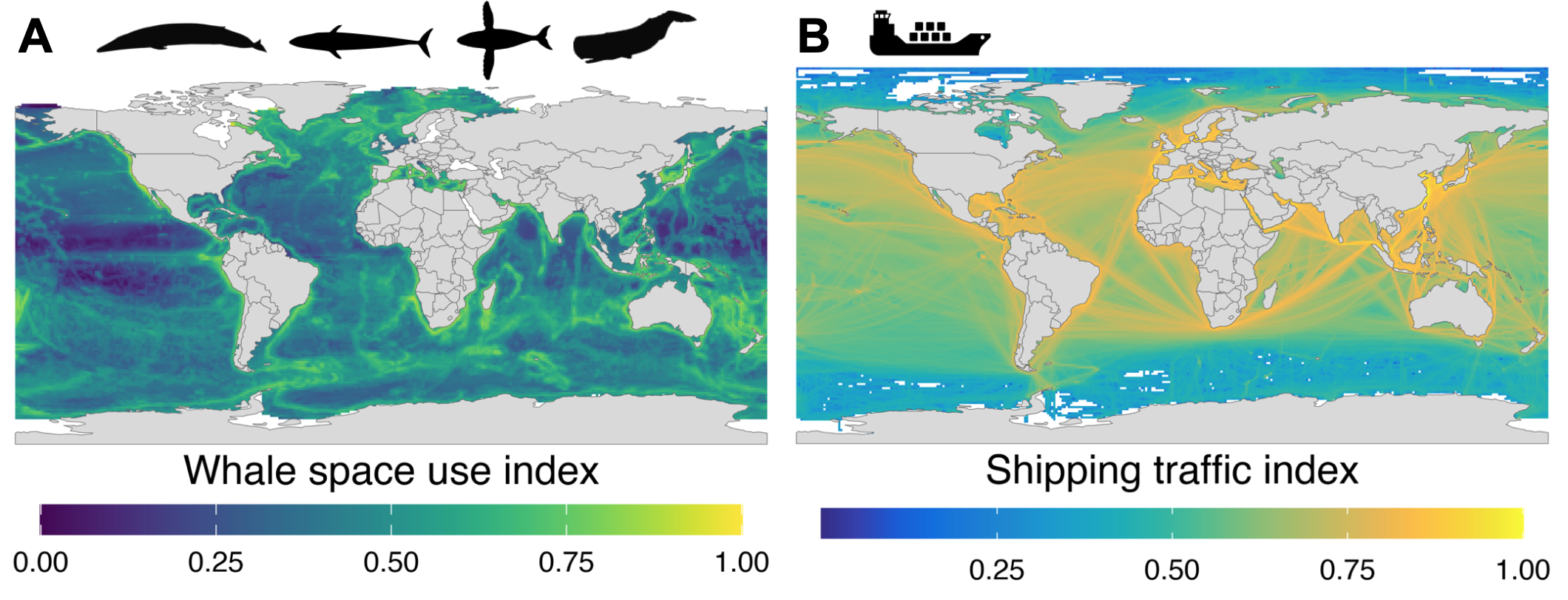
“This translates to ships traveling thousands of times the distance to the moon and back within these species’ ranges each and every year,” she said. “And this problem is only projected to increase as global trade grows in the coming decades.”
The good news is that efforts in recent years to reduce the number of whale-ship collisions have been successful. Along the California coast, Whale Safe, a collaboration between researchers, citizen scientists and cargo ship operators, has reported fewer collisions between the vessels and creatures from alarmingly high numbers in 2019 and 2020, when the program was launched.
What made this work here?
“Getting the vessels to slow down ,” said UCSB marine ecologist and paper co-author Douglas McCauley, whose lab developed Whale Safe, which involves vessel tracking and whale monitoring. The Santa Barbara Channel is a migration superhighway and feeding ground for several species of whales including fins, humpbacks and blues. It also overlaps with two of the busiest port complexes in the world, Los Angeles and Long Beach in the south and Oakland in the north.
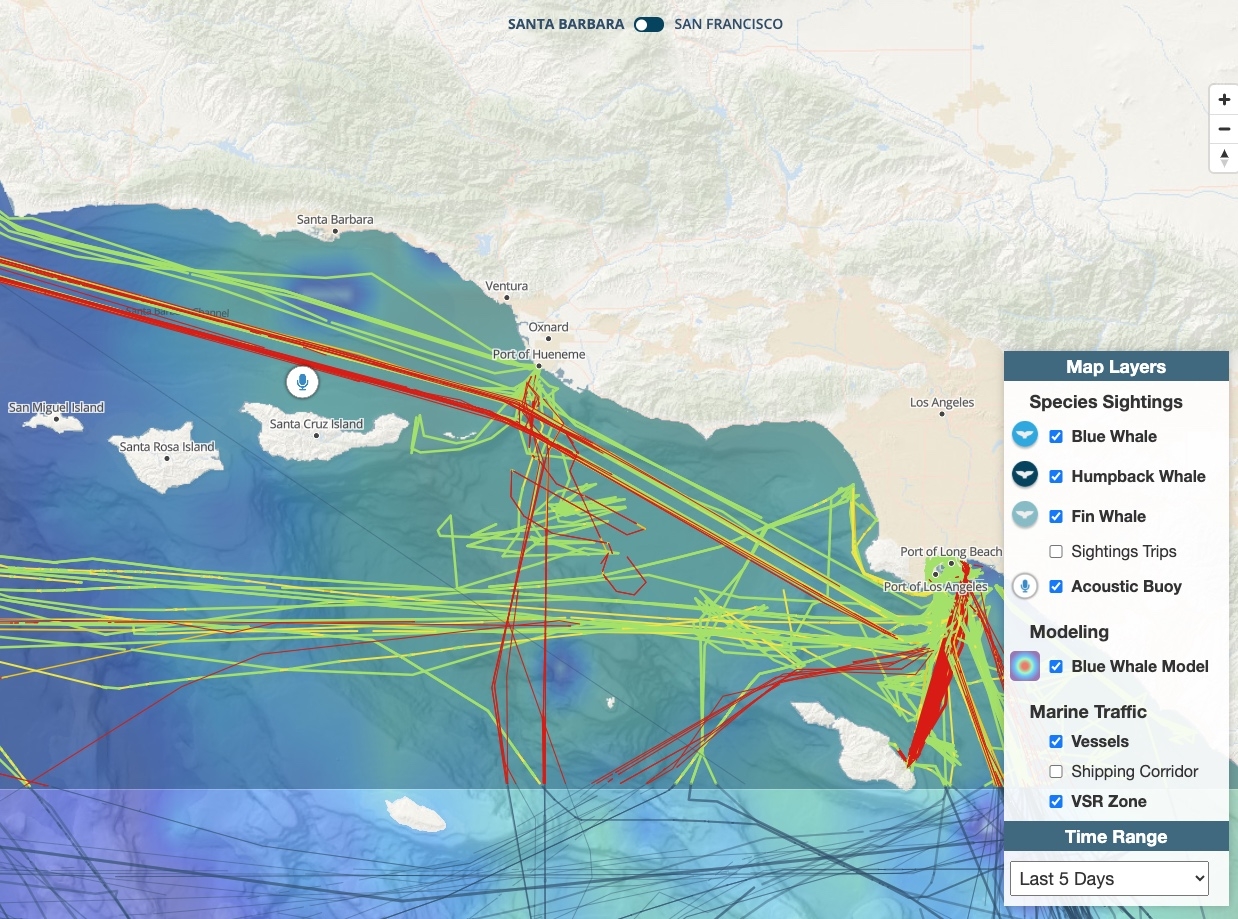
These are two areas where ships are asked by the federal government to voluntarily slow down from May to December to protect endangered whales. By alerting cargo ships to the presence of the whales and providing shipping companies with data on ship compliance with whale slow zones, Whale Safe has helped operators reduce their vessels’ speed and prevent collisions.
Though successful, these and other management measures currently exist over only a small segment of the world’s whale migration paths. The research team found that only 7% of areas at highest risk for whale-ship collisions have any measures in place to protect whales from this threat. For the four whale species in this study, these highest risk areas lie largely along coastal areas in the Mediterranean, portions of the Americas, southern Africa and parts of Asia.
To generate these estimates of whale collision risk the team first had to generate a map of where the whales are in the ocean. Despite their charisma, nobody had ever generated a global map of how these great whales use the ocean at this level of precision. “How is it possible there is not a good map of where the whales are found?” McCauley said. “This is why working on the ocean is wonderful, there is yet so much to be learned. ”
To assemble this global whale map the international team looked at the waters where blue, fin, humpback and sperm whales live, feed and migrate, pooling data from government surveys, sightings by members of the public, and tagging studies. They even pulled data from the logbooks of whaling vessels. They combined this novel database with information on the courses of 176,000 cargo vessels from 2017 to 2022 — tracked by each ship’s automatic identification system, and processed using an algorithm from Global Fishing Watch — to identify where whales and ships are most likely to meet.
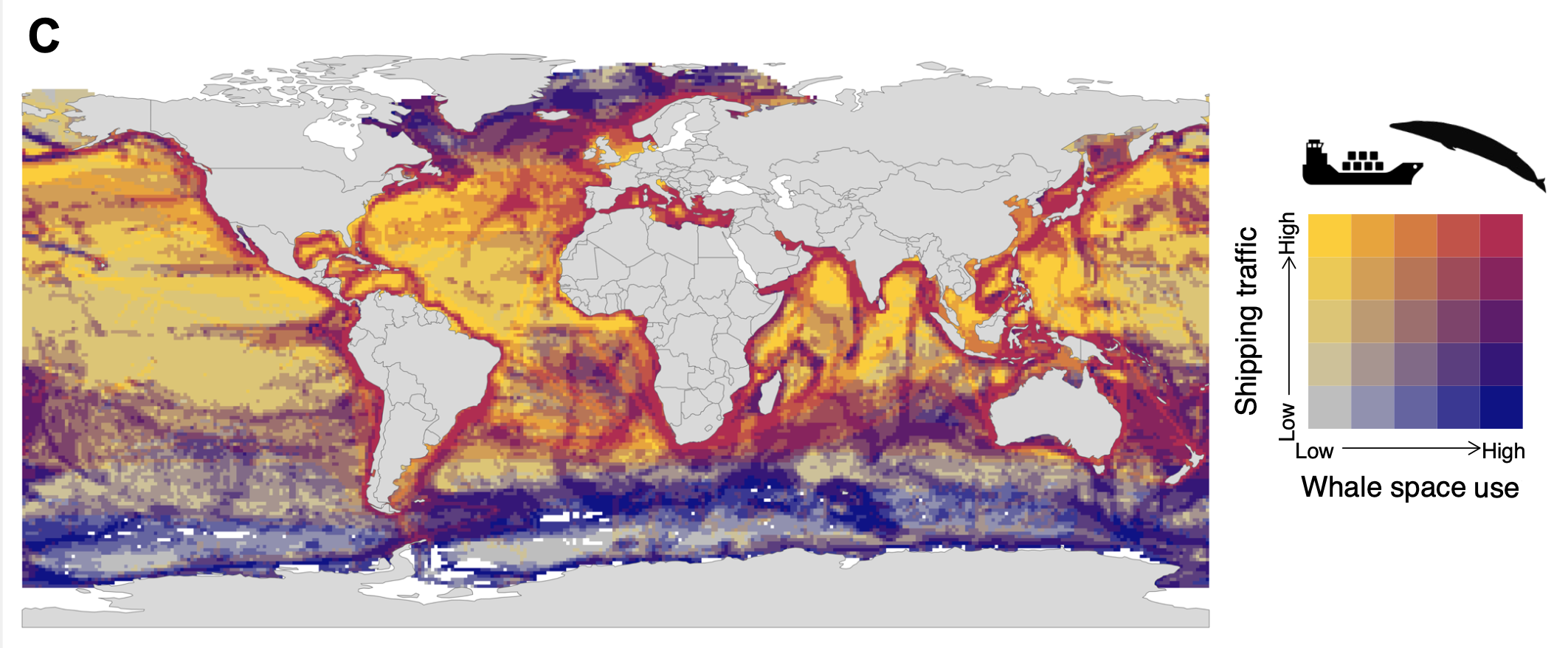
The study uncovered some new regions of potential high risk for whale-ship collisions, including southern Africa; South America along the coasts of Brazil, Chile, Peru and Ecuador; the Azores; and East Asia off the coasts of China, Japan and South Korea.
“This was one of the most exciting and important discoveries to me,” Rhodes said. “These are vast areas of the ocean where whales may quietly be being killed. This may be a silent contributor to why we aren’t seeing more optimistic recoveries for some at-risk whale populations.” The discovery of these probable new hotspots of whale risk means that the international community and countries in these regions, many of which are committed to whale conservation, can come together to address this issue.
The research also usefully reaffirmed the scientists’ confidence in certain regions already known to be high-risk areas for ship strikes: North America’s Pacific coast (including large sections of the California coast), Panama, the Arabian Sea, Sri Lanka, the Canary Islands and the Mediterranean Sea.
The team found that mandatory measures to reduce whale-ship collisions were unfortunately very rare, overlapping just 0.54% of blue whale hotspots and 0.27% of humpback hotspots, and not overlapping any fin or sperm whale hotspots. Though many collision hotspots fell within marine protected areas, these preserves often lack speed limits for vessels, as they were largely established to curb fishing and industrial pollution.
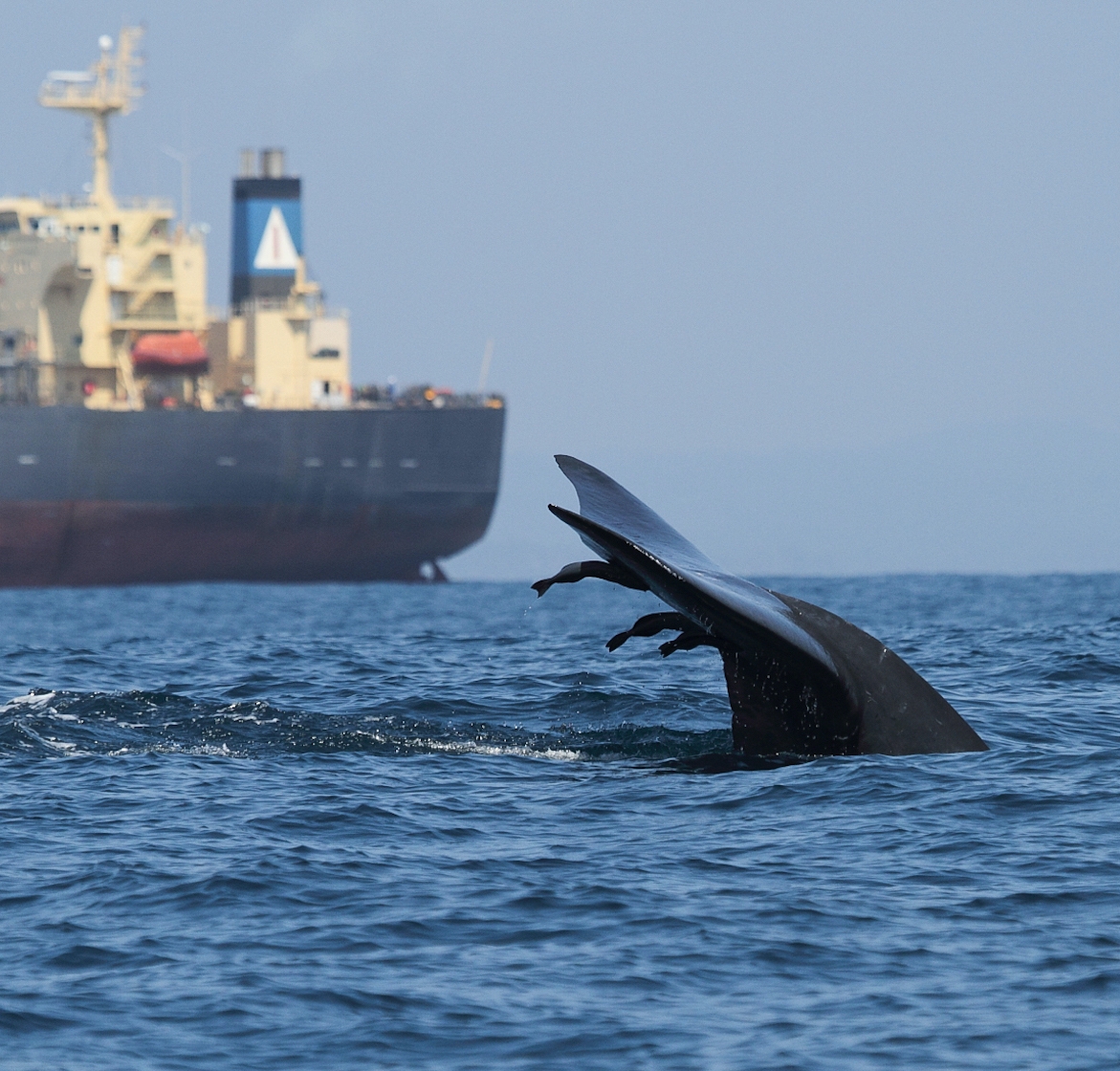
For all four species the vast majority of hotpots for whale-ship strikes — more than 95% — hugged coastlines, falling within a nation’s exclusive economic zone. That means that each country could implement its own protection measures in coordination with the U.N.’s International Maritime Organization.
“From the standpoint of conservation, the fact that most high-risk areas lie within exclusive economic zones is actually encouraging,” said UW postdoctoral researcher and the study’s lead author Anna Nisi. “It means individual countries have the ability to protect the riskiest areas.” Most of the management measures currently exist along the Pacific coast of North America and in the Mediterranean Sea. Implementing management measures across an additional 2.6% of the ocean’s surface would protect all of the highest-risk collision hotspots identified, according to the researchers.
The authors hope their global study could spur local or regional research to map out the hotspot zones in finer detail, inform advocacy efforts and consider the impact of climate change, which will change both whale and ship distributions as sea ice melts and ecosystems shift.
“Protecting whales from the impact of ship strikes is a huge global challenge. We’ve seen the benefits of slowing ships down at local scales through programs like ‘Blue Whales Blue Skies’ in California. Scaling up such programs will require a concerted effort by conservation organizations, governments and shipping companies,” said co- author Jono Wilson, director of ocean science at the California Chapter of The Nature Conservancy, and
an adjunct professor at UCSB’s Bren School of Environmental Science & Management, which helped identify the need for this study and secured its funding. “Whales play a critical role in marine ecosystems. Through this study we have measurable insights into ship-collision hotspots and risk and where we need to focus to make the most impact.”



